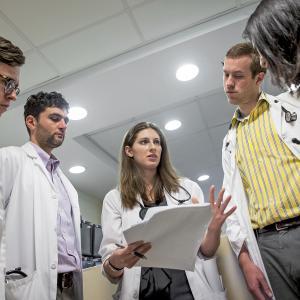
Photo: LukaTDB/Getty
Medical schools across the country have adjusted their curriculums in the wake of coronavirus disease (COVID-19) to include more remote learning, virtual reality, and simulations.
For example, instructors at NYU Grossman School of Medicine three-dimensionally scanned plastinated bodies in order to make anatomy courses available in a remote setting. “We thought, how do we teach anatomy if students are not on-site for access to cadavers? And we thought to apply new technologies to resources we already had,” says Melvin G. Rosenfeld, PhD, senior associate dean for medical education at NYU Grossman School of Medicine.
“Virtual reality tools have allowed for hybrid instruction, unlocking the potential of certain platforms such as simulation centers for a large number of remote learners,” says Marc M. Triola, MD, director of the Institute for Innovations in Medical Education at NYU Langone. For example, with a faculty member on-site at the simulation center, students could interact with mannequins and observe their “vitals” all through a virtual space, Dr. Triola says.
It’s a shared sentiment that, even after the pandemic, all the innovations borne from the crisis will need to be preserved and adapted for future education needs. “Telehealth has become a mainstay, and the technologies involved in enabling it will need to be taught to students,” Dr. Triola says.
“Medical education won’t ever be the same,” according to Dr. Rosenfeld.
Read more in Crain’s Health Pulse New York newsletter (subscription required).

